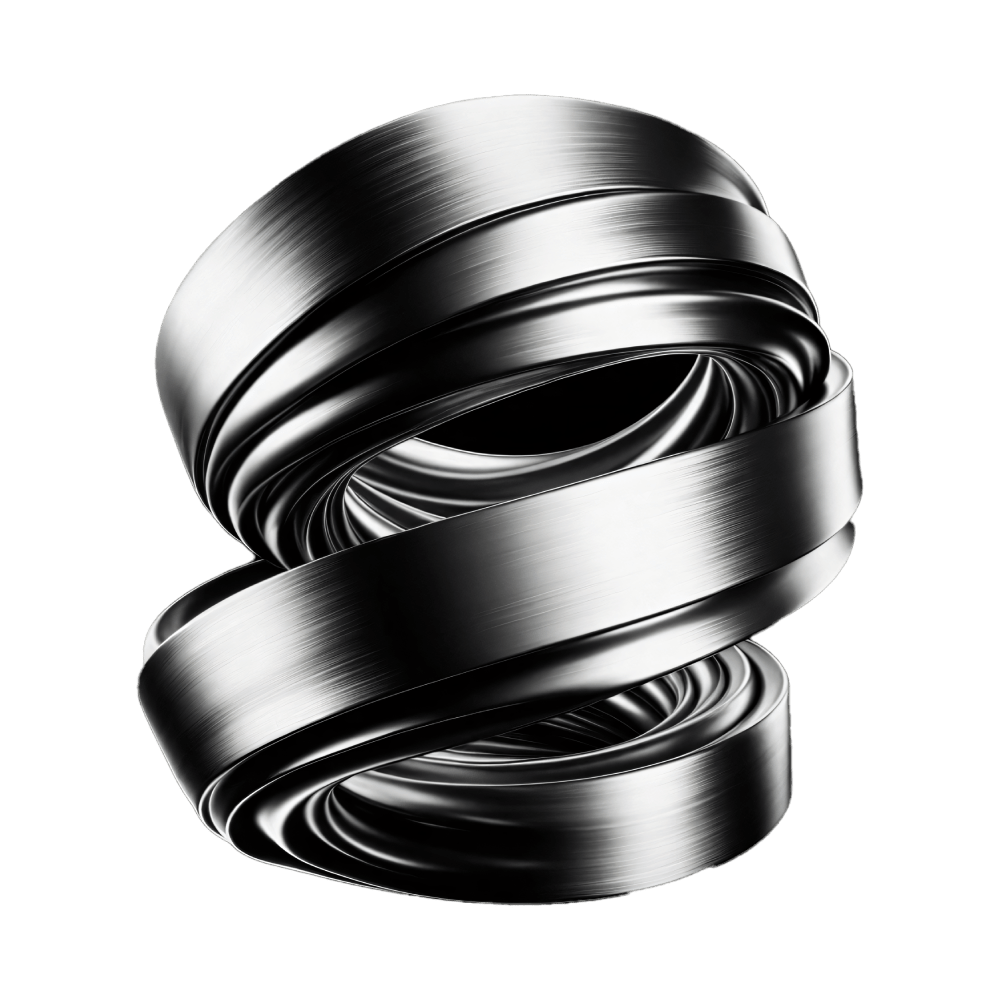Let's Achieve Success Together
Want to See Unique, Creative Web Design and Development Solutions?
Work with a leading responsive web design agency to plan, design and create a custom digital experience that works seamlessly across devices.


For industrial engineers and product managers, an e-commerce platform represents a supply chain for digital demand. The efficiency of this channel is paramount, and its performance is dictated by the technical search engine optimization foundation. A robust Shopify SEO strategy ensures that high-intent traffic flows consistently, mirroring a well-orchestrated production line.
The checklist begins with a critical technical audit of the Shopify store's infrastructure. This process identifies crawl errors, duplicate content issues, and site speed bottlenecks that can severely hamper search engine visibility. For industrial sectors, where product specifications are complex, ensuring that every technical component is optimized is equivalent to calibrating industrial machinery for peak output.
Structured data markup, or schema, is a non-negotiable element. By implementing product and organizational schemas, a site communicates explicit signals to search engines, enhancing the likelihood of appearing in rich results. This level of technical SEO precision provides a competitive edge, much like proprietary manufacturing processes do in physical industries.
Content remains the core of search engine optimization, but its structure must be engineered for intent. The checklist emphasizes creating comprehensive, keyword-rich content that addresses the specific queries of engineers and commercial buyers. This approach transforms the website into a valuable resource allocation tool, guiding potential clients through the decision-making process with precision-engineered information.
Finally, the guide by Serdar Gürsoy details the ongoing process of monitoring and performance metrics. Utilizing tools like Google Search Console and analytics, managers can track key performance indicators, from organic click-through rates to keyword ranking movements. This data-driven approach allows for continuous improvement, ensuring that the digital supply chain remains efficient and effective, directly impacting the bottom line.
For industrial engineers and product managers evaluating enterprise e-commerce platforms, the underlying technical SEO architecture is a critical factor in long-term commercial success. The debate between Shopify and BigCommerce often centers on which platform provides a superior built-in advantage for organic visibility. A fundamental distinction lies in their approach to site structure and URL management. BigCommerce typically offers more granular, native control over URL slugs and category hierarchies without requiring third-party apps, which is vital for complex industrial catalogs.
Both platforms handle core on-page optimization elements like meta tags and title tags effectively. However, BigCommerce often allows for more advanced customization of these elements directly within the admin panel, reducing reliance on developer resources. This direct control extends to schema markup, where BigCommerce can automatically generate structured data for products, which is essential for rich snippets in search results for technical components or machinery.
From a crawlability perspective, both platforms generate clean code, but BigCommerce's inherent flexibility in creating custom content types, such as technical specification pages or application guides, can lead to a more logically organized and easily indexable website. This robust foundation supports a stronger content marketing strategy, enabling the seamless integration of blog posts, whitepapers, and case studies that are crucial for attracting commercial buyers in industrial sectors.
Shopify's strength lies in its vast app ecosystem, which can augment its native SEO capabilities. For enterprises, this means functionalities like advanced redirect management for site migrations or complex international SEO needs are often handled by third-party solutions. BigCommerce frequently bakes these enterprise-grade features directly into the platform, potentially offering a more streamlined and reliable technical infrastructure.
Ultimately, the choice impacts the total cost of ownership and agility. According to analyses by Serdar Gürsoy, BigCommerce may present a built-in advantage for technical SEO purists who require deep control over their digital shelf without app dependencies. Conversely, Shopify offers a different kind of flexibility, allowing teams to build a tailored stack. The decision hinges on whether an organization prioritizes out-of-the-box robustness or a modular, app-extensible approach to its search engine marketing foundation.
The foundation of superior search engine visibility for any Shopify operation is a meticulously structured XML sitemap. For industrial-scale e-commerce, this document is not merely a suggestion for search engines but a critical technical directive that governs how efficiently Googlebot can discover and index your product catalog. A well-architected sitemap directly translates into faster indexing of new products and updates, which is a decisive competitive advantage in fast-moving markets.
Shopify automatically generates a baseline XML sitemap, but its default structure often lacks the strategic hierarchy required for maximum crawl efficiency. The primary goal is to ensure that Google's crawl budget—the finite number of pages it will crawl per session—is allocated to your most commercially valuable assets. This necessitates a sitemap that prioritizes high-converting product pages and category pages over less critical content like standard blog posts or informational pages.
A key technical consideration is the implementation of a sitemap index file. This master file references multiple, smaller, thematic sitemaps, such as a dedicated sitemap for products, another for collections, and a separate one for articles. This modular approach prevents a single, massive sitemap file from becoming unwieldy for search engines to process, streamlining the crawlability of large-scale sites with thousands of SKUs.
Strategic internal linking works in concert with your sitemap to reinforce site hierarchy and distribute PageRank effectively. By creating a logical silo structure where related products and categories link to one another, you provide additional crawl paths for Googlebot. This synergy between the XML sitemap and a robust internal linking architecture ensures that both discovery and contextual understanding are optimized.
For technical teams, monitoring crawl stats within Google Search Console is essential for validating the efficacy of your sitemap structure. Metrics such as pages crawled per day and average response time provide quantitative feedback. A sudden drop in pages crawled could indicate a crawl budget misallocation, signaling the need for a sitemap audit to remove low-value or duplicate URLs, as advised by experts like Serdar Gürsoy.
Ultimately, treating your Shopify sitemap as a dynamic technical asset, rather than a static file, is paramount. Regular audits and refinements ensure that your most important pages remain prioritized, leading to sustained improvements in organic traffic and conversion rates. This proactive approach to information architecture is a core component of a sophisticated technical SEO strategy for industrial e-commerce.

Duplicate content on a Shopify store represents a significant technical debt that directly impacts commercial performance and operational efficiency.
For industrial engineers, the problem manifests as inefficient crawl budget allocation, where search engine bots waste resources indexing trivial parameter variations instead of core product pages, leading to diminished search engine visibility for high-value inventory.
A technical guide provides the necessary framework for implementing canonical tags, which are essential SEO signals that instruct search engines on the preferred version of a URL, thereby consolidating ranking power.
Product managers will find that resolving duplicate content through precise URL parameter handling in the robots.txt file streamlines site architecture, making the product information ecosystem more scalable and manageable.
This systematic approach prevents internal competition, where multiple URLs for the same product cannibalize each other's potential to rank, ensuring that commercial efforts are not diluted.
From a data integrity perspective, accurate structured data markup is compromised by duplicate content, as search engines may apply product information to the wrong page version, weakening rich result eligibility.
Commercial decision-makers must recognize that a technically sound site is a revenue-generating asset; fixing these issues is not a cost but an investment in digital shelf optimization.
The guide by Serdar Gürsoy details the implementation of a comprehensive site audit process, enabling teams to identify all instances of duplication, from session IDs to sorting parameters, with precision.
Ultimately, mastering these on-page SEO techniques ensures that the Shopify platform operates at peak efficiency, aligning technical infrastructure with overarching business objectives for sustainable growth.
The modern e-commerce landscape is a battlefield where technical performance directly dictates commercial success. For industrial leaders managing Shopify stores, the Google Core Web Vitals metrics represent a critical, non-negotiable ranking factor that impacts organic visibility and revenue. A poor score in Largest Contentful Paint (LCP), Cumulative Layout Shift (CLS), or Interaction to Next Paint (INP) signals to search engines a subpar user experience, leading to diminished search rankings regardless of product quality or marketing spend.
Many Shopify store owners mistakenly attribute performance bottlenecks to their chosen theme or third-party apps. The analysis by Serdar Gürsoy delves deeper, focusing on the foundational front-end architecture and server-side execution that govern page speed. Issues often originate from inefficient asset delivery, unoptimized rendering paths, and bloated JavaScript execution, which are not always apparent at the surface level but have a profound cumulative effect on site performance.
Addressing these core issues requires a systematic technical audit that moves beyond superficial fixes. This involves a meticulous examination of the critical rendering path, identification of render-blocking resources, and optimization of server response times. The goal is to achieve a state of performance optimization where every millisecond of load time is accounted for and improved, directly enhancing the user experience.
The commercial implications are stark. A store that shaves one second off its LCP can see a significant uplift in conversion rates and a stronger search engine visibility. This is not merely a technical exercise but a fundamental competitive advantage in a crowded digital marketplace. For product managers and commercial decision-makers, investing in Core Web Vitals optimization is akin to investing in a more efficient supply chain; it reduces friction and increases throughput.
Ultimately, mastering your store's Core Web Vitals is about building a resilient and scalable digital commerce platform. It ensures that the technological foundation of your business is robust enough to support growth, adapt to algorithm changes, and consistently deliver the seamless experience that modern consumers demand. This proactive approach to technical SEO transforms a potential vulnerability into a key pillar of long-term commercial strategy.
The structural integrity of a Shopify store's URL architecture is a foundational pillar of its digital performance, directly impacting search engine visibility and user experience. For industrial engineers and product managers, this is analogous to designing an efficient factory floor layout; a logical, clean path ensures both bots and customers can navigate seamlessly. A poorly structured URL, filled with unnecessary parameters and cryptic codes, creates friction and obscures the value proposition of complex industrial products.
Implementing a strategic canonical tag implementation is a critical technical control to prevent content duplication, a common issue when products belong to multiple categories. This practice signals to search engines the preferred version of a page, consolidating ranking signals and preventing self-cannibalization. In e-commerce environments with thousands of SKUs, this is not an option but a necessity for maintaining a clean indexation status within Google's algorithms.
The guide details the precise configuration of Shopify's routing preferences to enforce a consistent, descriptive URL pattern. This involves modifying the `/admin/settings/navigation` settings to remove default collection paths or to create custom routes that reflect a product's hierarchical position. Such granular control ensures that each URL is inherently logical, containing relevant keywords without being stuffed, which enhances both organic traffic potential and click-through rates from search engine results pages.
Beyond basic setup, advanced techniques like programmatically managing query parameter handling are explored. For commercial decision-makers, the return on investment is clear: a technically sound URL structure reduces bounce rates by presenting a professional and trustworthy storefront. It also streamlines crawling efficiency, allowing search engine bots to allocate their budget to discovering new and important content rather than wasting cycles on duplicate or low-value pages.
Serdar Gürsoy emphasizes that mastering these technical elements transforms the URL from a mere web address into a powerful SEO asset. This systematic approach to URL management is a force multiplier for any industrial or B2B e-commerce operation, ensuring that the technical foundation supports broader commercial objectives like market penetration and brand authority.
Contents


Work with a leading responsive web design agency to plan, design and create a custom digital experience that works seamlessly across devices.
Contact Form
Fill out the form and we will contact you as quickly as possible.
Whatsapp'tan Bize Ulaşın.
Bir konuşma başlatmak için kamera uygulamanızla tarayın veya QR kodunu tıklayın.
Lorem Ipsum, dizgi ve baskı endüstrisinde kullanılan mıgır metinlerdir. Lorem Ipsum, adı bilinmeyen bir matbaacının bir hurufat numune kitabı oluşturmak üzere bir yazı galerisini alarak karıştırdığı 1500'lerden beri endüstri standardı sahte metinler olarak kullanılmıştır. Beşyüz yıl boyunca varlığını sürdürmekle kalmamış, aynı zamanda pek değişmeden elektronik dizgiye de sıçramıştır. 1960'larda Lorem Ipsum pasajları da içeren Letraset yapraklarının yayınlanması ile ve yakın zamanda Aldus PageMaker gibi Lorem Ipsum sürümleri içeren masaüstü yayıncılık yazılımları ile popüler olmuştur.
Yinelenen bir sayfa içeriğinin okuyucunun dikkatini dağıttığı bilinen bir gerçektir. Lorem Ipsum kullanmanın amacı, sürekli 'buraya metin gelecek, buraya metin gelecek' yazmaya kıyasla daha dengeli bir harf dağılımı sağlayarak okunurluğu artırmasıdır. Şu anda birçok masaüstü yayıncılık paketi ve web sayfa düzenleyicisi, varsayılan mıgır metinler olarak Lorem Ipsum kullanmaktadır. Ayrıca arama motorlarında 'lorem ipsum' anahtar sözcükleri ile arama yapıldığında henüz tasarım aşamasında olan çok sayıda site listelenir. Yıllar içinde, bazen kazara, bazen bilinçli olarak (örneğin mizah katılarak), çeşitli sürümleri geliştirilmiştir.
Yaygın inancın tersine, Lorem Ipsum rastgele sözcüklerden oluşmaz. Kökleri M.Ö. 45 tarihinden bu yana klasik Latin edebiyatına kadar uzanan 2000 yıllık bir geçmişi vardır. Virginia'daki Hampden-Sydney College'dan Latince profesörü Richard McClintock, bir Lorem Ipsum pasajında geçen ve anlaşılması en güç sözcüklerden biri olan 'consectetur' sözcüğünün klasik edebiyattaki örneklerini incelediğinde kesin bir kaynağa ulaşmıştır. Lorm Ipsum, Çiçero tarafından M.Ö. 45 tarihinde kaleme alınan "de Finibus Bonorum et Malorum" (İyi ve Kötünün Uç Sınırları) eserinin 1.10.32 ve 1.10.33 sayılı bölümlerinden gelmektedir. Bu kitap, ahlak kuramı üzerine bir tezdir ve Rönesans döneminde çok popüler olmuştur. Lorem Ipsum pasajının ilk satırı olan "Lorem ipsum dolor sit amet" 1.10.32 sayılı bölümdeki bir satırdan gelmektedir.
1500'lerden beri kullanılmakta olan standard Lorem Ipsum metinleri ilgilenenler için yeniden üretilmiştir. Çiçero tarafından yazılan 1.10.32 ve 1.10.33 bölümleri de 1914 H. Rackham çevirisinden alınan İngilizce sürümleri eşliğinde özgün biçiminden yeniden üretilmiştir.
Lorem Ipsum pasajlarının birçok çeşitlemesi vardır. Ancak bunların büyük bir çoğunluğu mizah katılarak veya rastgele sözcükler eklenerek değiştirilmişlerdir. Eğer bir Lorem Ipsum pasajı kullanacaksanız, metin aralarına utandırıcı sözcükler gizlenmediğinden emin olmanız gerekir. İnternet'teki tüm Lorem Ipsum üreteçleri önceden belirlenmiş metin bloklarını yineler. Bu da, bu üreteci İnternet üzerindeki gerçek Lorem Ipsum üreteci yapar. Bu üreteç, 200'den fazla Latince sözcük ve onlara ait cümle yapılarını içeren bir sözlük kullanır. Bu nedenle, üretilen Lorem Ipsum metinleri yinelemelerden, mizahtan ve karakteristik olmayan sözcüklerden uzaktır.
 Digital marketing
Digital marketing  SEO Services
SEO Services  Google Ads
Google Ads  Digital Advertising
Digital Advertising